Q1. ‘A’ invested Rs. X on CI and ‘B’ invested Rs. Y on SI at the rate of 10% and 20% respectively. A invested for two years and B invested for three years and ratio of interest got by ‘A’ for second year and total interest got by B is 1 : 3. Veer invested Rs. (X + Y) on SI for two years on 12% p.a. and gets Rs. 372 as interest. Find (X – Y)?
(a) Rs. 350
(b) Rs. 450
(c) Rs. 400
(d) Rs. 750
(e) Rs. 800
Q2.Veer and Anurag invested Rs. 1200 & Rs. 1600 respectively and after 15 months Veer withdrew 2/23 th of total profit, while Anurag added 4/23 th of total profit. If at the end of two years share of profit ratio of Veer & Anurag is 9 : 14, then find the difference between profit share of Veer & Anurag?
(a) Rs. 400
(b) Rs. 450
(c) Rs. 500
(d) Rs. 550
(e) Rs. 600
Q3. Sum of ages of A and B is 12 years more than twice the age of C and Sum of ages of A & D is twice the age of C. If the average age of B&D is 50 years and average age of all four is also 50 years, then find the difference between the age of A and C?
(a) 6 years
(b) 1 years
(c) 3 years
(d) 4 years
(e) 2 years
Q4. Aman divided his total savings between his son and daughter in the ratio of 5 :3. His son invested his share on CI for two years at the rate of 10% and received the interest Rs. 480 less than his sister, who invested her share on SI for three years at the rate of 15% . Find Share of Aman’s son and daughter respectively?
(a) Rs. 10800, Rs. 2000
(b) Rs. 9600, Rs. 4200
(c) Rs. 8000, Rs. 4800
(d) Rs. 9800, Rs. 3000
(e) Rs. 7000, Rs. 5800
Q5. P and Q together can complete a work in 24 days, while Q and R working together can complete the same job in 32 days. P and Q started the work and did it for 8 days, after that P left the work and R joined Q and after 12 more days, Q also left the work. Then, the remaining work was completed by R in 28 days. Find in how many days R will complete the work alone?
(a) 96 days
(b) 72 days
(c) 108 days
(d) 90 days
(e) 81 days
Directions (6-10): In each of the following questions two equations are given. Solve these equations and give answer:
(a) if x≥y, i.e. x is greater than or equal to y
(b) if x>y, i.e. x is greater than y
(c) if x≤y, i.e. x is less than or equal to y
(d) if x<y, i.e. x is less than y
(e) x=y or no relation can be established between x and y
Q6. I. 6x² + 17x + 5 = 0
II. 2y² + 21y + 49 = 0
Q7. I. x² – 8x + 15 =0
II. 2y² – 5y – 3 = 0
Q8. I. 5x² + 11x + 2 = 0
II. 4y² + 13y + 3 = 0
Q9. I. 4x + 2y = 4
II. 3x + 5y = 3
Q10. I. 6x² + x- 15 =0
II. 4y² – 24y + 35 = 0
Directions (11-15): Study the below mentioned line chart carefully and answer the following questions.
Line chart shows the units produced (in units) and units sold (in %) by 5 different companies in a given year.
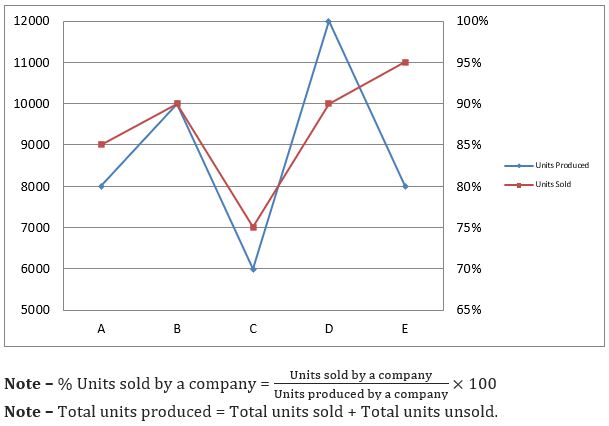
Q11. Find unsold units of company-A & C together is what percent of sold units of company-D?
(a) 20%
(b) 10%
(c) 30%
(d) 25%
(e) 15%
Q12. Selling price of an unit sold by company-E & company-B is Rs.15 and Rs.13 respectively. 12% and 15% of units sold by company-E & company-B respectively are returned by the customers. Then, find the difference between total revenue of company-B & company-E.
(a) Rs.970
(b) Rs.870
(c) Rs.910
(d) Rs.840
(e) Rs.810
Q13. Revenue of company-D is Rs.48,600 more than revenue of company-C and selling price of each unit of company-C is Rs.6 more than the selling price of each unit of company-D. If profit % earned by company-C is 20%, then find the cost price of each unit sold by company-C.
(a) Rs.20
(b) Rs.15
(c) Rs.10
(d) Rs.25
(e) Rs.30
Q14. Find difference of average of unsold units of company-A, C & D and average of units sold of company-A & E.
(a) 5900
(b) 6300
(c) 5400
(d) 5200
(e) 6000
Q15. If units sold by company-F is 350% of the unsold units of company-D & E together and ratio of sold units to unsold units of company-F is 7 : 3. Then, find total units produced by company-F.
(a) 10000
(b) 9000
(c) 8000
(d) 12000
(e) 11000
Solutions
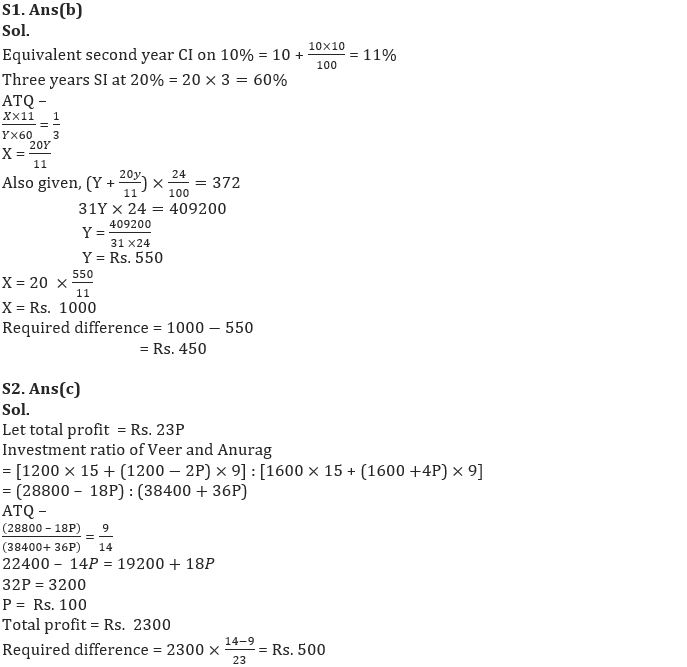
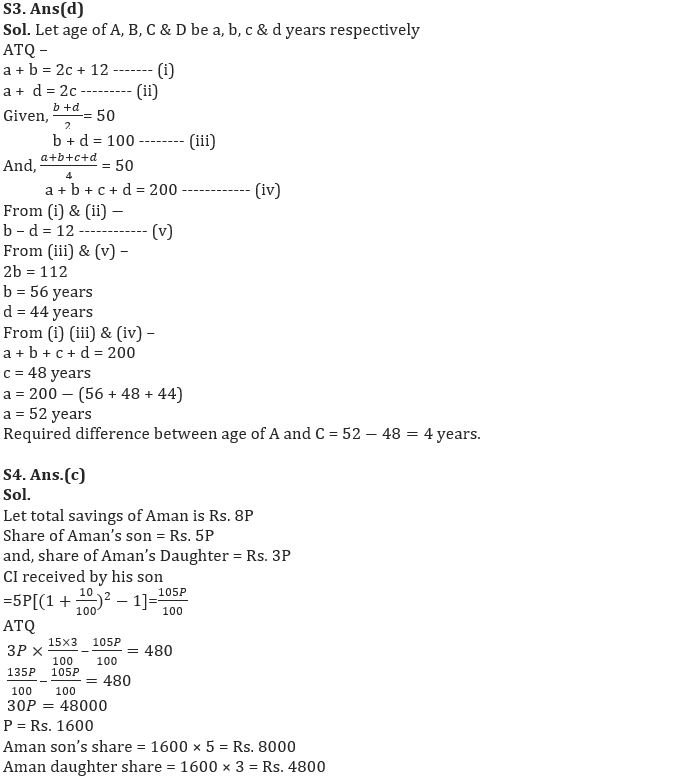
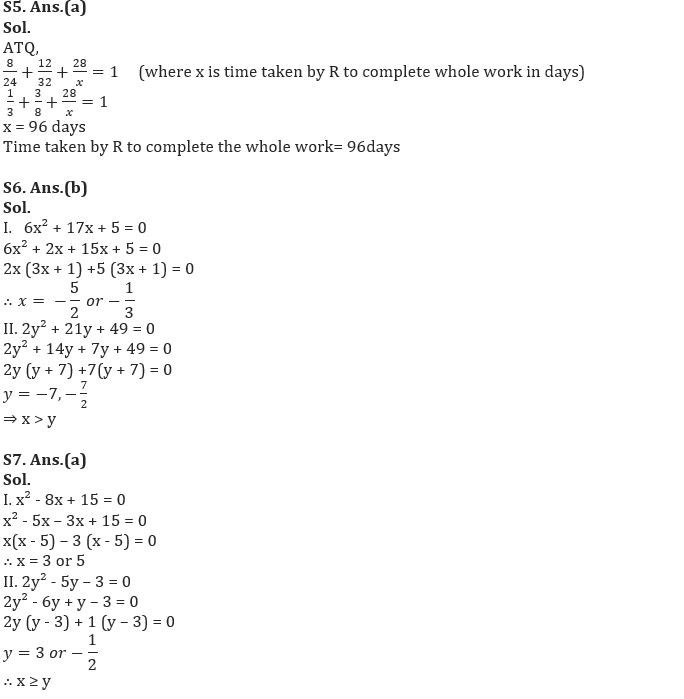
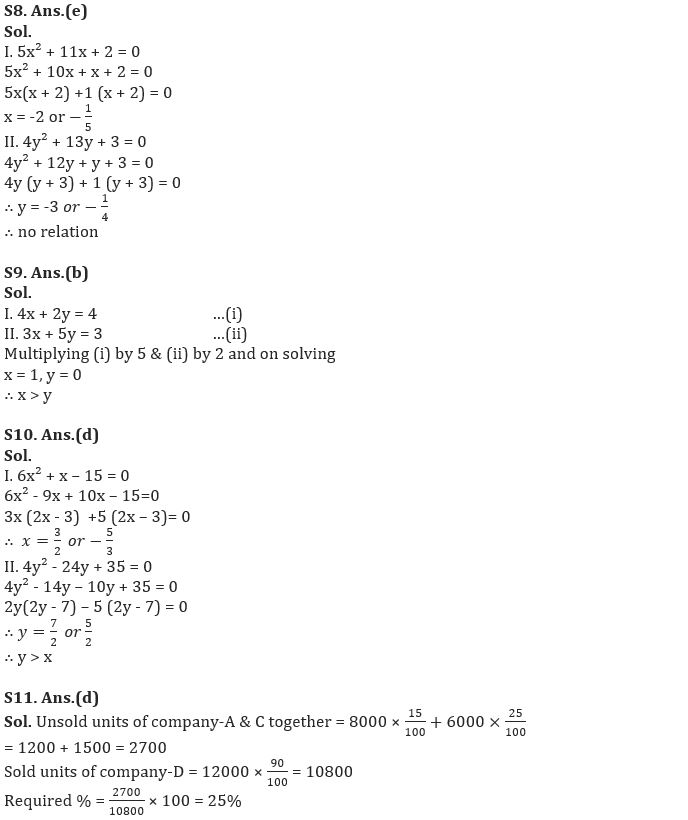
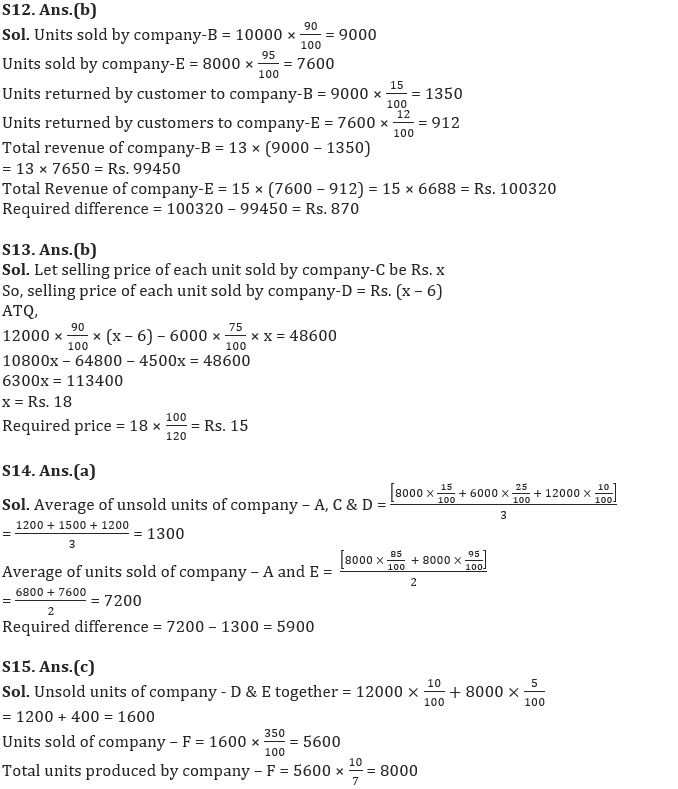





 Quantitative Aptitude Quiz For Bank Main...
Quantitative Aptitude Quiz For Bank Main...
 Quantitative Aptitude Quiz For Bank Foun...
Quantitative Aptitude Quiz For Bank Foun...





